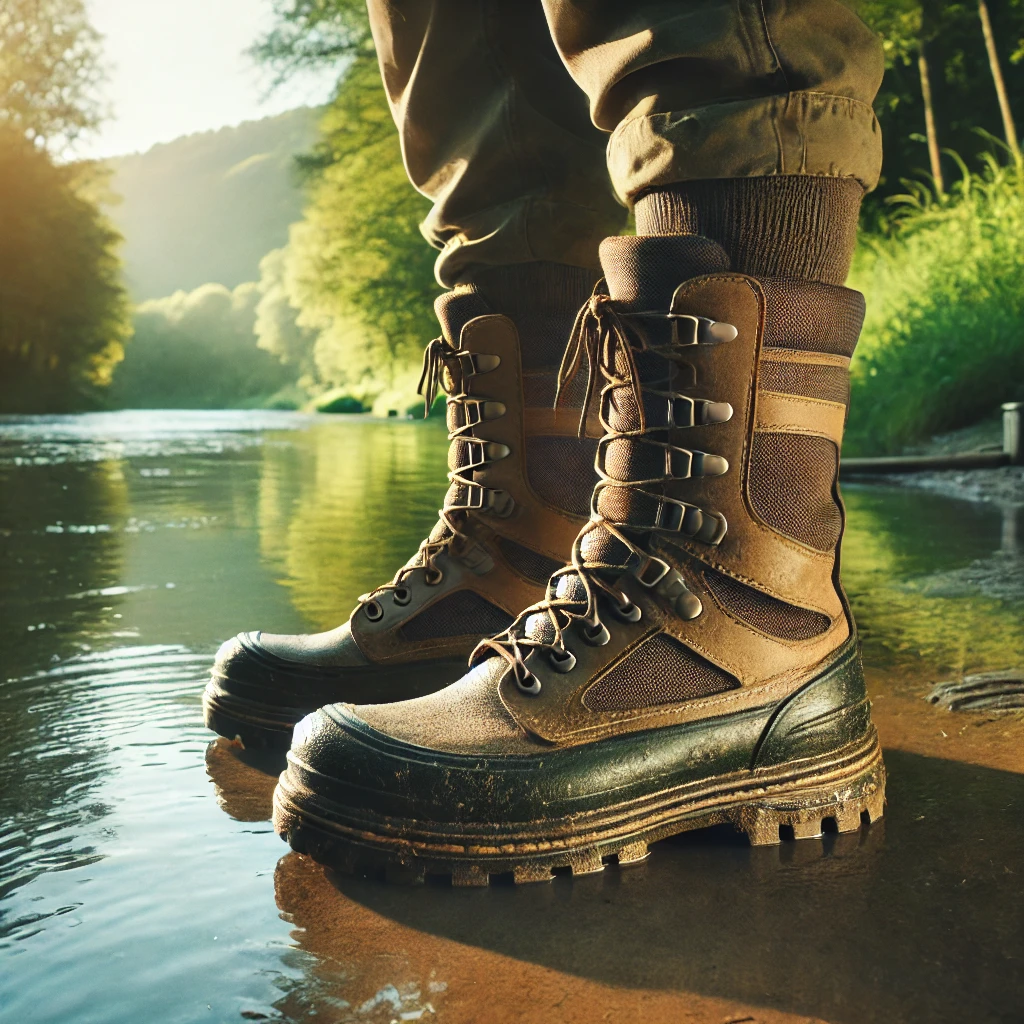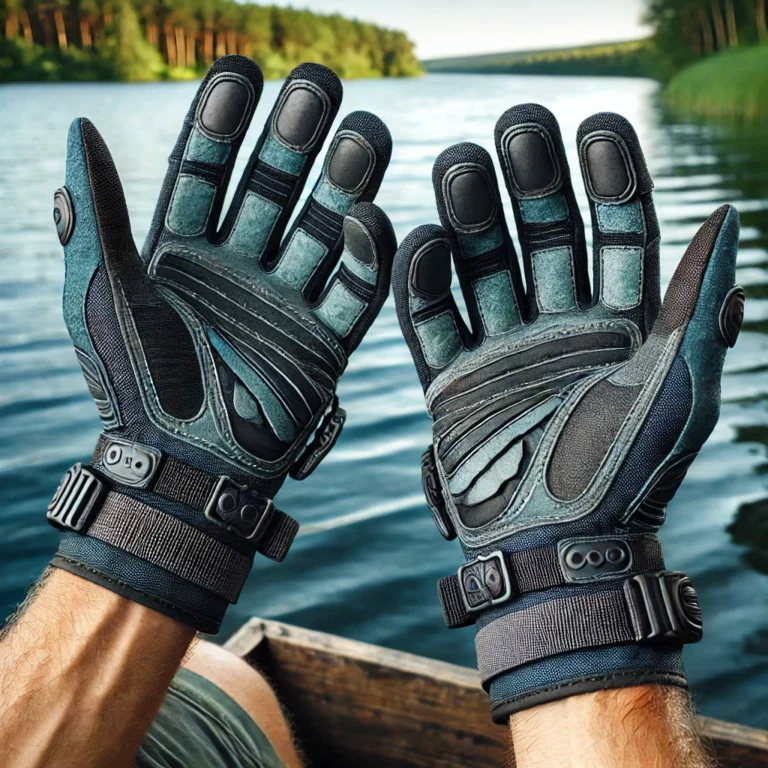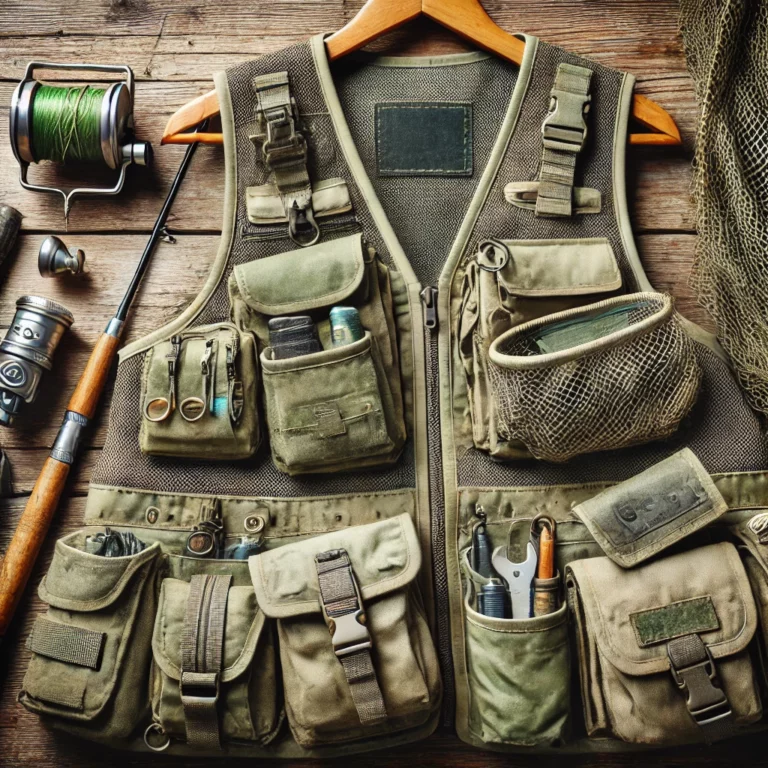Fishing Boots Explained: What You Need to Know
Fishing is a way more than simply casting a line and waiting for a bite; it’s a truly immersive experience that requires the right gear to ensure comfort, safety, and success.
One often overlooked but essential piece of gear is fishing boots.
But are they really necessary?
In this comprehensive guide, we’ll explore the various types of fishing boots, their applications, and the pros and cons of each.
When you find yourself wading through a river, trekking across muddy banks, or navigating slippery decks, the right footwear can make a huge difference.
The Importance of Fishing Boots

Fishing environments can be unpredictable and challenging.
From slippery rocks to muddy shores and icy waters, your feet can encounter various conditions.
Fishing boots are designed to provide protection, traction, and comfort, enabling you to focus on the catch rather than worrying about your footing.
Here’s why they are crucial:
- Safety: Fishing often involves navigating rough or slippery terrain. Proper footwear can prevent slips, trips, and falls, reducing the risk of injury.
- Comfort: Standing for long periods, especially in wet conditions, can lead to discomfort and fatigue. Fishing boots are designed to provide support and insulation, keeping your feet dry and comfortable.
- Protection: From sharp rocks to fish hooks, fishing environments can be hazardous. Boots offer protection against these elements, safeguarding your feet from injuries.
Types of Fishing Boots
Fishing boots come in various styles, each tailored to specific fishing conditions and preferences.
Let’s explore the main types and their applications:
1. Flats Fishing Boots
Best for: Flats fishing, shallow saltwater fishing, tropical conditions
Flats fishing boots are specifically designed for anglers who fish in shallow, warm-water environments like coastal flats, where fish such as bonefish and permit are commonly found.
These boots prioritize comfort, protection, and versatility.
Features:
- Traction: Flats fishing boots typically have non-marking, rubber soles that provide good grip on sandy or muddy bottoms, as well as on boat decks.
- Protection: These boots offer protection from sharp coral, rocks, and marine life like stingrays and urchins.
- Lightweight and Breathable: Designed for tropical climates, flats boots are lightweight and often made from breathable materials to keep feet cool.
Pros:
- Excellent protection from sharp objects and marine life
- Lightweight and comfortable, ideal for warm climates
- Good traction on various surfaces
Cons:
- Limited insulation; not suitable for cold water
- May not provide enough support for long walks on uneven terrain
- Can be more expensive than basic fishing boots
2. Deck Boots
Best for: Offshore fishing, saltwater fishing, boat fishing
Deck boots, also known as boat boots, are designed for anglers who fish from boats, particularly in saltwater environments.
These boots prioritize grip and waterproofing, essential for maintaining footing on wet, slippery decks.
Features:
- Non-Slip Soles: Deck boots have non-marking, slip-resistant soles to prevent sliding on wet surfaces.
- Waterproofing: These boots are typically made from waterproof materials like rubber, keeping your feet dry even in rough seas.
- Easy On/Off: Deck boots often feature a pull-on design for easy removal after a long day of fishing.
Pros:
- Excellent grip on wet surfaces
- Waterproof, keeping feet dry
- Easy to put on and take off
Cons:
- Limited insulation; not ideal for cold weather
- May lack ankle support
- Can be less breathable, leading to sweaty feet
3. Neoprene Boots
Best for: Cold weather fishing, ice fishing
Neoprene boots are insulated, waterproof boots designed to keep feet warm and dry in cold conditions.
They are commonly used in ice fishing or cold-weather fishing trips.
Features:
- Insulation: Neoprene provides excellent insulation, trapping heat and keeping feet warm in freezing temperatures.
- Waterproofing: The material is inherently waterproof, making these boots suitable for wet and snowy conditions.
- Comfort: Neoprene boots are flexible and comfortable, conforming to the shape of your feet.
Pros:
- Excellent insulation for cold conditions
- Waterproof and flexible
- Comfortable fit
Cons:
- Can be bulky and heavy
- May cause overheating in warmer conditions
- Limited breathability
4. Rubber Boots
Best for: General fishing, wet and muddy conditions
Rubber boots, also known as wellies or gumboots, are versatile footwear suitable for a variety of fishing environments.
They offer waterproofing and protection from mud and water.
Features:
- Waterproofing: Rubber boots are fully waterproof, making them ideal for wet and muddy conditions.
- Durability: These boots are tough and resistant to wear and tear.
- Ease of Cleaning: Rubber boots are easy to clean, making them practical for messy conditions.
Pros:
- Fully waterproof
- Durable and easy to clean
- Affordable and widely available
Cons:
- Limited insulation; not ideal for cold weather
- Can be uncomfortable for long periods
- Lack of support and cushioning

Choosing the Right Fishing Boots
Choosing the right fishing boots depends on several factors, including the type of fishing you do, the environments you fish in, and your personal preferences.
Here are some key considerations:
- Fishing Environment: Consider where you fish most often. Are you wading through rivers, fishing from a boat, or standing on muddy banks? The environment will dictate the type of boots you need.
- Weather Conditions: The weather plays a significant role in selecting fishing boots. Cold weather requires insulated boots, while warm weather may call for breathable, lightweight options.
- Comfort and Fit: Comfort is crucial, especially if you’re spending long hours on your feet. Look for boots with adequate support, cushioning, and a good fit to prevent blisters and fatigue.
- Durability and Maintenance: Fishing boots can be a significant investment, so durability is essential. Consider the materials and construction of the boots, as well as how easy they are to clean and maintain.
- Regulations and Environmental Concerns: Be aware of local regulations, such as bans on felt soles due to the risk of spreading invasive species. Opt for environmentally friendly options when possible.
Are Fishing Boots Necessary?
In the end, whether fishing boots are necessary depends on your fishing style and the environment.
For many anglers, they are an essential piece of gear, providing safety, comfort, and protection.
With a wide range of options available, from flats fishing boots to deck boots and beyond, there’s a pair to suit every need.
Investing in the right fishing boots can enhance your fishing experience, allowing you to focus on what matters most—enjoying the great outdoors and landing that big catch.
But don’t stop at just some good boots.
To fully equip yourself for a successful fishing trip, consider exploring our other gear guides:
- Keep cool and protected with the right fishing shirts
- Shield yourself from the sun with our top picks for fishing hats
- Maintain dexterity and grip with quality fishing gloves
- Organize your tackle and tools with versatile fishing vests
- Carry all your essentials comfortably with durable fishing backpacks
By combining the right footwear with other essential gear, you’ll be well-prepared for just about any fishing adventure.
Happy fishing!







